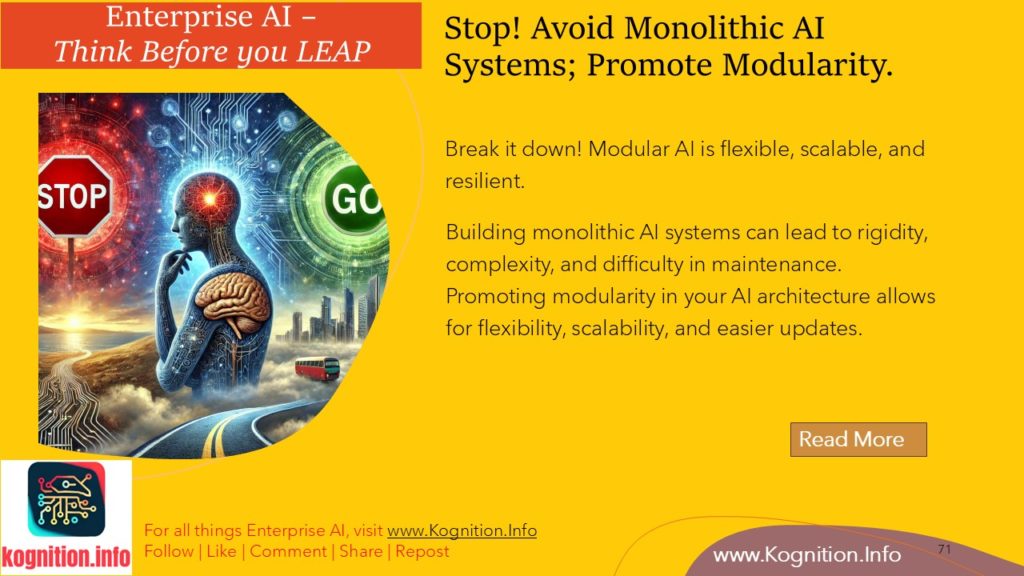
Stop! Avoid Monolithic AI Systems; Promote Modularity.
Break it down! Modular AI is flexible, scalable, and resilient.
Building monolithic AI systems can lead to rigidity, complexity, and difficulty in maintenance. Promoting modularity in your AI architecture allows for flexibility, scalability, and easier updates.
- Independent Components: Design your AI system as a collection of independent, reusable components. This allows you to update or replace individual components without affecting the entire system.
- Microservices Architecture: Consider a microservices architecture for your AI applications. This approach breaks down complex systems into smaller, independent services that communicate with each other.
- Flexibility and Adaptability: Modularity allows you to adapt your AI system to changing needs and integrate new technologies more easily. You can swap out components, add new features, or scale individual modules as needed.
- Reusability: Modular components can be reused across different AI applications, saving development time and resources.
- Maintainability and Troubleshooting: Modularity makes it easier to maintain and troubleshoot your AI system. You can isolate issues to specific components and update or replace them without disrupting the entire system.
Remember! Monolithic AI systems can be cumbersome and difficult to manage. Promoting modularity in your AI architecture allows for flexibility, scalability, and easier maintenance.
What’s Next: Evaluate your AI systems for modularity. If you have monolithic systems, consider breaking them down into smaller, independent components. Adopt a microservices architecture for new AI applications to promote flexibility and scalability.
For all things, please visit Kognition.info – Enterprise AI – Stop and Go.
